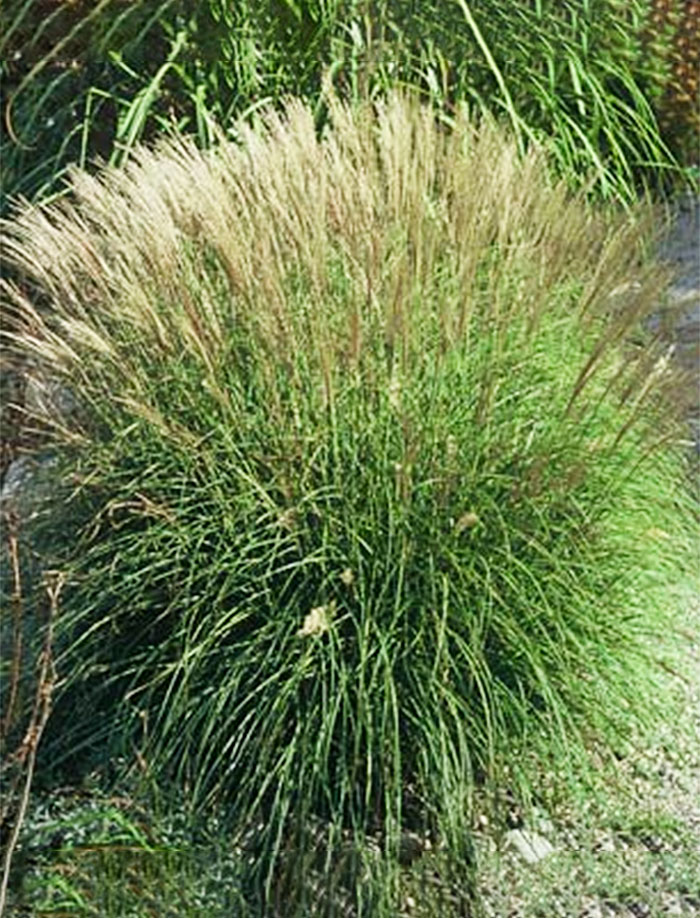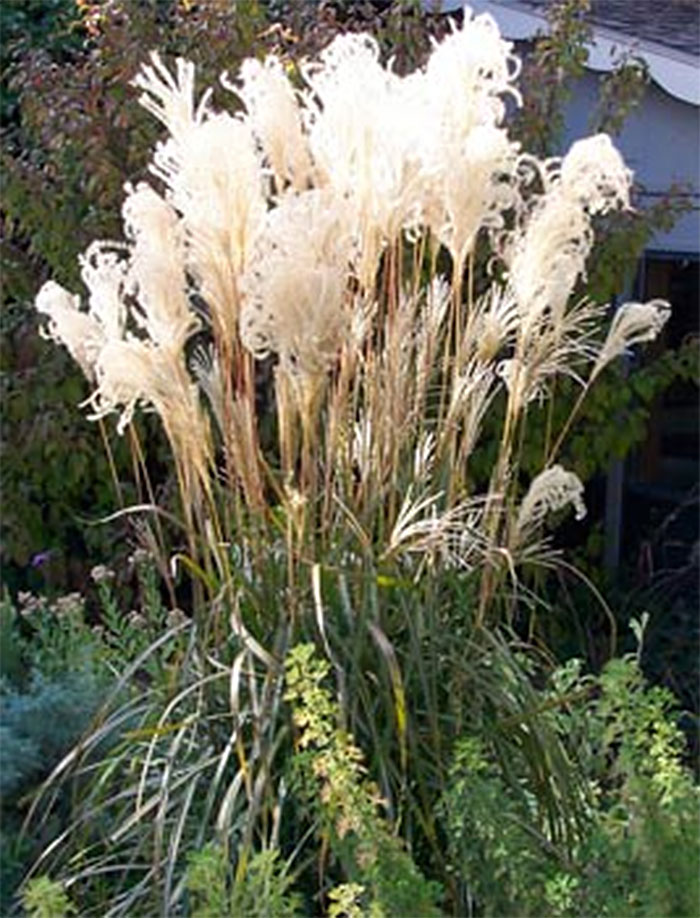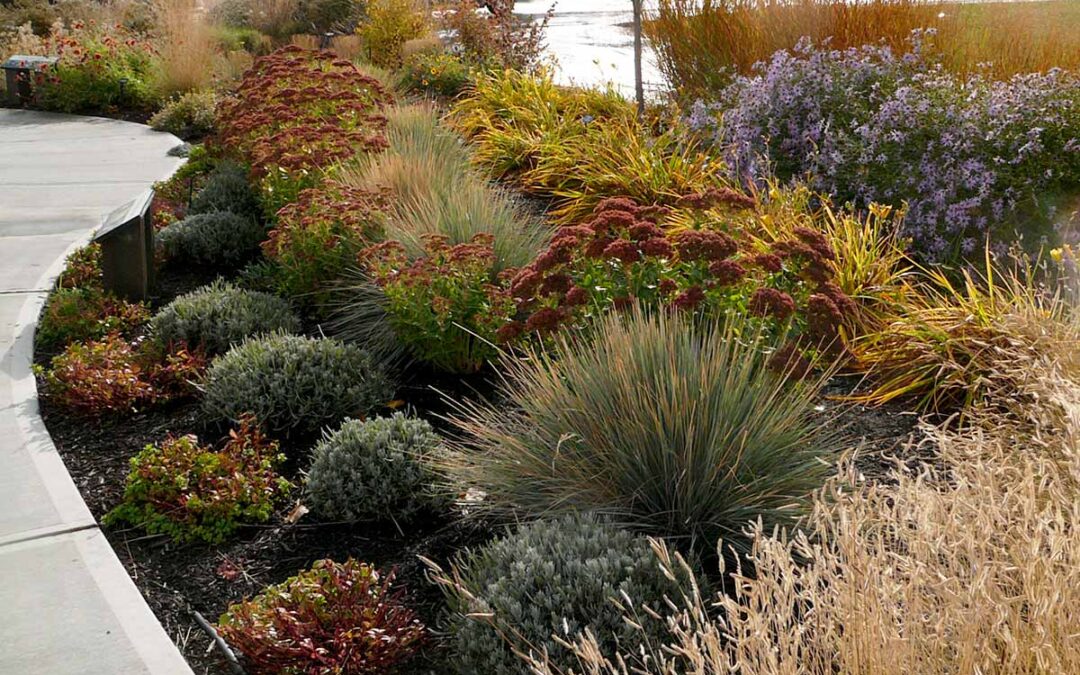The following is an excerpt from the Blue Stem website. This site was put together by Jim Brockmeyer and Muriel Neale as part of a nursery business they were running in Christina Lake, BC. Both have now retired, but their excellent website lives on with funding for the hosting provided by OXA.
Feeding Ornamental Grasses
Instructions regarding the feeding of ornamental grasses are really very simple – don’t do it. Well, actually that is a bit of an exaggeration, but grasses actually prefer to be grown on the lean side. They will be sturdier without the addition of the high-powered nutrients. You may think that fertilizers such as those used on lawns would be appropriate for grasses, however, have you noticed how quickly the lawn grows after fertilizing? Tall-growing ornamental grasses will bolt for the sky and with such rapid growth will be unable to hold themselves up. Result – floppy plants.
Just remember to go easy on organic fertilizers too. On the Garden Web Forum, I have read a tale by an experienced ornamental grass grower who worked a lot of compost into his planting hole. The grasses flopped badly. In comparison, his grasses planted without compost did fine.
The only exception to the rule is Miscanthus. It does better with some extra fertilizer and moisture. The solution to the potential flopping problem is to use organic fertilizers such as well-rotted manure, mushroom manure, compost, leaf mold, etc. What makes organic fertilizers acceptable is that they release their nutrients sloooowly.
I hope I have convinced you? Limit your fertilizing!

Miscanthus Adagio

Miscanthus Malepartus
Watering Ornamental Grasses
Ornamental grasses, be they plugs or field-grown clumps, need to be well watered their first year. The soil was fluffed up when you dug the hole, so it will dry out faster. The plant’s roots are not well-established and some of the roots were lost when the plant was dug up. This means that there aren’t quite as many roots to take care of the top growth as the plant had planned. Readily accessible moisture makes the job of the roots a whole lot easier.
Note: Mulch can be very useful the first year. However, do not mulch right to the crown of the plant. This can cause the crown to rot because of the constant moisture.
But the next year is a completely different story. Their root systems should be well established, meaning they have gone deep in search of water and nutrients. They can take care of themselves for fairly lengthy periods of time, especially as they get older. If you have a layer of mulch, they can fend for themselves for longer. However, excessive watering will cause them to flop. Have you ever grown Achillea (Yarrow) in rich moist soil? Same problem. These plants want to live a spartan existence.
How Deep to Plant
It is very important to plant your ornamental grasses so that the crown of the plant is level with the soil’s surface. Some grasses, in particular Helictotrichon and Pennisetum, are very sensitive to being planted too deep. The crown rots and the plant dies.
First Watering
I expect you already know, but I would be negligent if I didn’t mention that the plugs or the field clumps must be thoroughly watered after transplanting. A good soaking gets rid of any air pockets that might have formed. Those air pockets cause the roots to dry out, even though the roots are under the ground.

